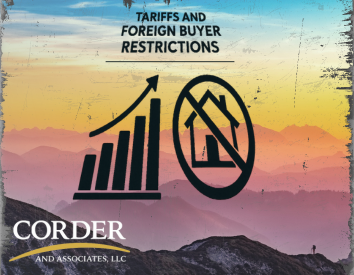How Tariffs and Foreign Buyer Restrictions Could Impact U.S. Real Estate
Recent policy shifts—including newly imposed tariffs and restrictions on foreign ownership of land—are beginning to stir discussion across the U.S. real estate industry. While the full economic consequences are still unfolding, early indications suggest a mixed but measurable impact on both urban and rural property markets.
Tariffs and Real Estate Costs
The introduction of new tariffs on imported goods and materials—particularly construction-related items such as steel, aluminum, and lumber—may result in increased building costs. Developers and homebuilders are already voicing concerns over rising expenses, which could slow the pace of new construction or push prices higher for end buyers. In commercial real estate, higher costs may affect large-scale development timelines or force adjustments in project scopes.
These added expenses may be passed on to consumers, potentially exacerbating affordability challenges in already tight housing markets. In rural areas, where margins are often thinner and development less frequent, the price sensitivity may be even more pronounced.
Foreign Buyer Restrictions
Simultaneously, new regulations limiting or prohibiting foreign nationals from purchasing land in certain states or nationwide could lead to a decrease in demand in specific segments of the market. Historically, foreign investors—particularly from Asia, Europe, and Canada—have played a modest but notable role in U.S. land and real estate transactions, often targeting farmland, luxury properties, and urban commercial assets.
With fewer international buyers in the market, some regions may see a temporary dip in competition or prices, especially in areas where foreign interest was a driving force. However, for most domestic buyers, this could be an opportunity to enter markets that were previously out of reach.
Outlook
While both tariffs and foreign ownership restrictions introduce new variables into the real estate landscape, the overall impact will likely vary by region and property type. Urban centers with heavy construction pipelines may feel tariff-related pressure more acutely, while rural land markets—especially those with prior international interest—could see shifts in buyer dynamics.
As with any policy change, long-term effects will depend on how the market adapts and how stakeholders—builders, buyers, and investors—respond to the evolving regulatory environment.




